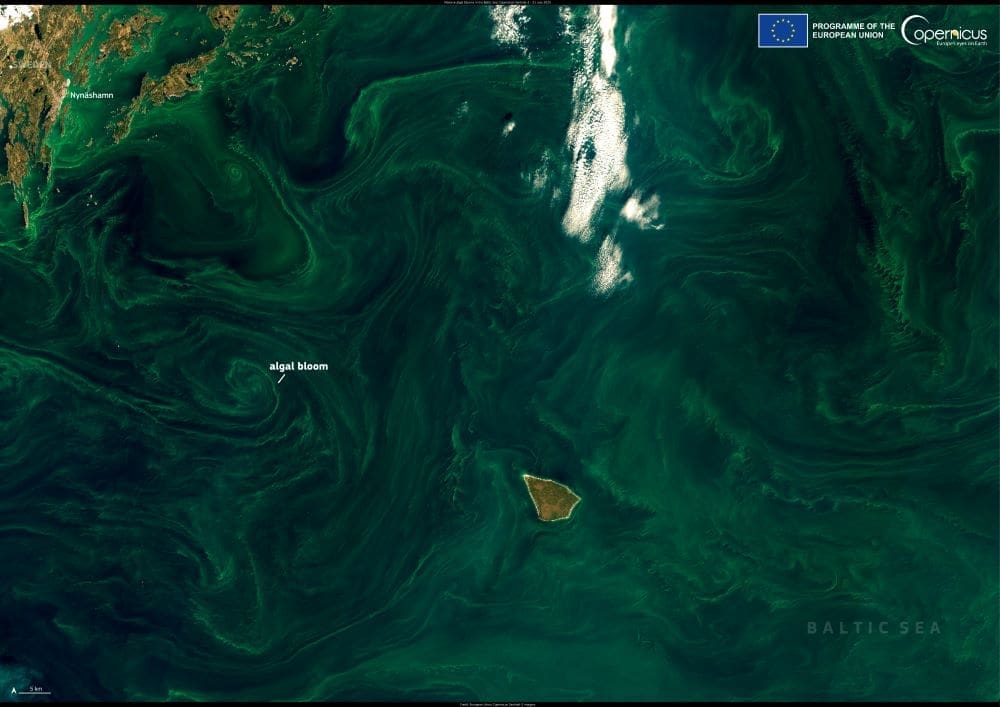Swirling green patterns have appeared once again in the Baltic Sea, a familiar sight in high summer when warm, sunny weather and an overload of nutrients combine to stimulate massive algal growth.
The image above, taken by a Copernicus Sentinel-2 satellite on 21 July 2025, captures dense blooms extending along the Swedish coastline. Satellite monitoring shows the bloom began forming in early July and has grown steadily since, driven by weeks of unusually hot weather and nutrient runoff from surrounding land areas.

Marine specialists in Sweden report that the bloom is now approaching beaches on Gotland and Öland and may spread further along the coast. According to recent assessments, this year’s bloom arrived earlier than usual and appears to be one of the most intense in recent memory.
Biologists are also highlighting the role of human activity. Urine released in shallow swimming areas adds nitrogen and phosphorus to the water – key ingredients for algal growth. While often dismissed as harmless, this behaviour becomes problematic when repeated by hundreds of beach visitors each day.
The consequences are visible both at the surface and below. When the algae eventually sink and decompose, the process can strip oxygen from the water, placing stress on marine life and altering coastal ecosystems. Some of the organisms involved in the bloom can also produce toxins that irritate the skin or cause illness in humans and animals. Authorities urge swimmers to avoid cloudy or discoloured water and to rinse off after bathing in affected areas.
The Copernicus Sentinel missions, together with the Copernicus Marine Service, play a key role in tracking these events and providing the data needed to understand broader changes in the ocean’s chemistry and biology. More information is available here.
Featured image credit: European Union, Copernicus Sentinel-2 imagery



